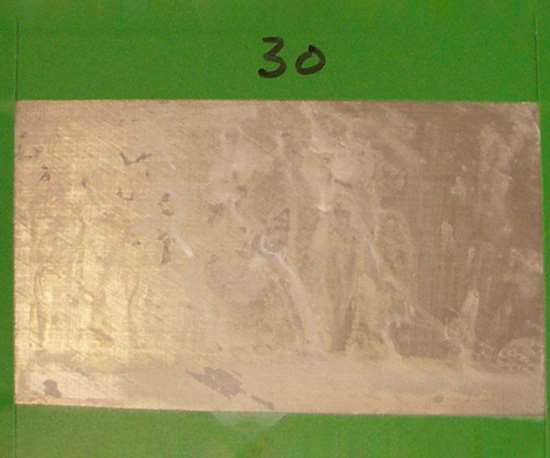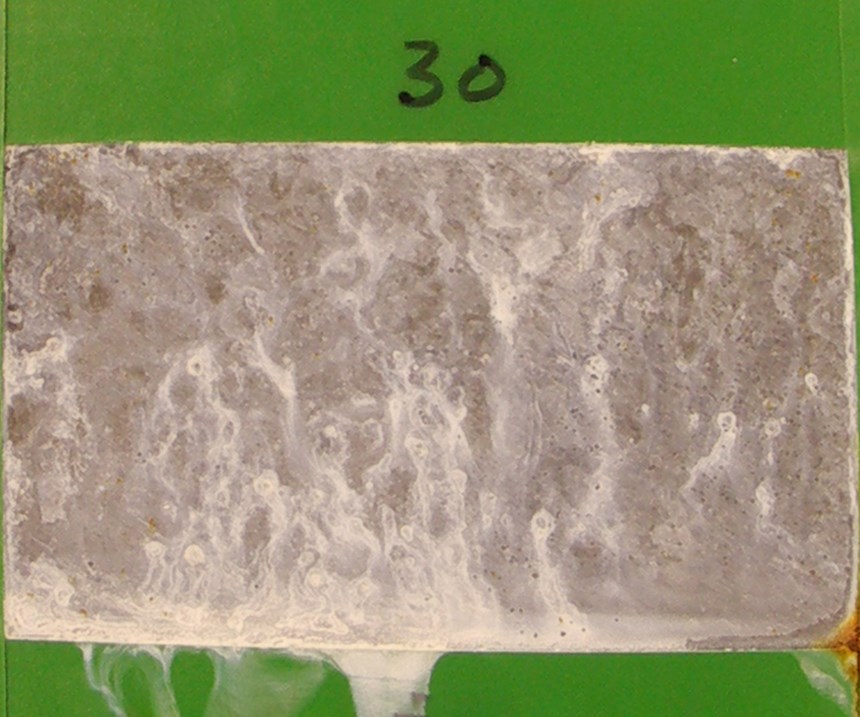How to Use Selective or Brush Plating for Zinc-Nickel
Q. Is there an approved process to repair damaged or defective zinc-nickel on aircraft components?
#basics
Q. Is there an approved process to repair damaged or defective zinc-nickel on aircraft components?
A. Selective, or brush plating is an approved low hydrogen embrittlement (LHE) process used to apply zinc-nickel onto localized areas of high-strength steel components for corrosion protection. It is used to apply localized deposits onto previously unplated parts and to repair defects on previously plated zinc-nickel. It is also approved for the repair of defective cadmium and IVD aluminum on localized areas.
Featured Content
Zinc-nickel is an environmentally and operator-friendly alternative to cadmium. It combines the sacrificial coating properties of zinc with the strength, ductility and corrosion resistance of nickel—creating a surface finish that, in some cases, is superior to cadmium. An alloy composition is between 9 to 14 percent nickel with the remaining being zinc. Although an LHE zinc-nickel deposit has been available for over 20 years, it has seen a significant increase in use over the last few years, coinciding with the aerospace industry and the environmental push to find safe and viable alternatives to cadmium coatings.
Selective plating is a well-engineered method of electroplating controlled thicknesses of deposits onto commonly used base materials for industrial components. As the name implies, the process is focused on a specific “select” area of a component. The area to be plated, as well as adjacent areas to be masked, are first cleaned with a suitable solvent. The part is then masked to isolate the area to be plated and to protect the adjacent areas from the effects of the chemical processes. Typical masking materials include aluminum and vinyl tapes, masking paints and special fixtures. But, the zinc-nickel process is focused on the area to be plated, with no isolation masking. Masking is minimized to control the solution runoff from the part.
The selective plating process is highly portable and can be used in the shop or it can be taken into the hangar to work directly, in-situ, on the aircraft. Minimal equipment is required for this process, usually consisting of a rectifier, leads, a handheld plating tool (anode) and a few accessories. The actual volume of plating solution required at the worksite for a typical repair is less than 1 liter. Standard PPE (personal protective equipment) includes gloves, safety glasses and local ventilation.
While, the typical selective plating process consists of several preparatory steps in which the work area is electrochemically prepared to receive an adherent final deposit—the thickness of which is controlled by ampere hours (Factor × Area × Thickness = Ampere Hours)—when plating zinc-nickel for an LHE repair application, the process is simplified. The steps include only a cleaning with a residue-free degreasing agent, mechanically roughening the surface to be plated by either abrasive blasting or by using 120 grit aluminum oxide sand paper, rinsing, plating and finally applying a conversion coating to improve the corrosion performance of the deposit. The typical repair thicknesses for zinc-nickel range from 10 to 18 μm (0.0004" to 0.0007"). A typical repair of a localized area can be done in less than 30 minutes.
In addition to numerous commercial specifications, AMS 2451/9, Brush Plating Zinc-Nickel, Low Hydrogen Embrittlement was written to cover the requirements for brush plating zinc-nickel by electrodeposition.
The brush-plated Type 2 deposit (using a trivalent chromium conversion coating) tested in accordance with ASTM B 117 will withstand 1,000 hours of exposure to salt spray corrosion with no evidence of base metal corrosion; as well as passing hydrogen embrittlement testing with notched tensile samples being subjected to a 200-hour sustained load test at 75 percent of the notched ultimate tensile strength. This conforms with ASTM F519 and all applicable federal, military, AMS and ASTM requirements.
Selective plating of zinc-nickel as an LHE repair application is a safe, simple and much more widely used process today than has been the case since its development over 20 years ago. Certification for the use of this process is available through approved vendors. Training classes are typically three days. Operator recertification is typically required annually.
Originally published in the June 2017 issue.
RELATED CONTENT
-
Blackening of Ferrous Metals
The reasons for installing an in-house cold blackening system are many and varied.
-
An Overview of Electroless Nickel Plating
By definition, electroless plating is metal deposition by a controlled chemical reaction.
-
Aluminum Anodizing
Types of anodizing, processes, equipment selection and tank construction.





















